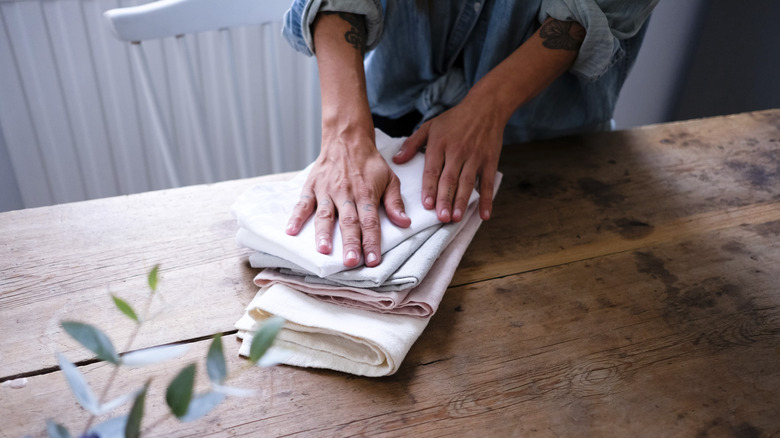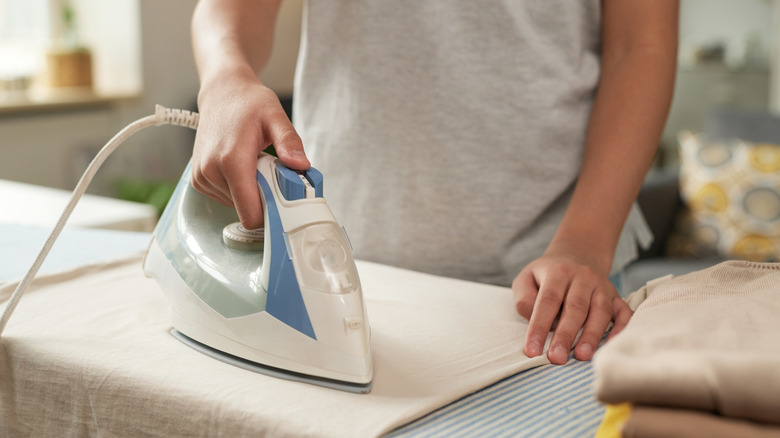Downsides To Cloth Napkins You Should Think About Before Making The Switch
Cloth napkins are an elegant upgrade from paper napkins. They come in a variety of fabrics, are a more eco-friendly option than paper napkins, even when considering water use from washing, and you could even save some money by not having to repeatedly buy disposable napkins. However, as beautiful as cloth napkins can be, they might not be the best choice for everyone, depending on your lifestyle and the fabric you want. Before you buy a set of pretty napkins, you should consider the downsides that come with purchasing a more expensive reusable option and the maintenance certain fabrics require.
For some people, it is no big deal to throw a few more pieces in the wash cycle, but large households, especially those with children or messy eaters, may have more trouble. The napkins look nice when you purchase them, but the more you and your household use them for spills and messes, the more worn down they will get. While it is generally recommended to replace cloth napkins every year or two, depending on their condition, your cloths may deteriorate more quickly due to regular use. Purchasing a larger quantity of cloth napkins can help you avoid running the laundry machine every day, but it also means spending more money. Since cloth napkins have a higher upfront cost than paper napkins, they might not be the money-saving hack you thought. Of course, if you repurpose old pillow cases into DIY dining room table decor in the form of cloth napkins, you will be less upset about stains or wear.
Fabric matters for cloth napkins
If you want to avoid replacing cloth napkins frequently, you need to properly take care of your napkins. Two popular sustainable options are cotton and linen. Cotton fabric should be washed frequently to prevent stains from setting, and it needs to be washed at a cold temperature and air dried to avoid shrinking and damage. Unfortunately, cotton is also prone to wrinkling, which means you need to use a fabric softener or iron if you want a crisp look. Storing the napkins flat rather than folded also helps to prevent wrinkles from forming, but this method takes up more space.
As for linen fabric, it is recommended that you wash the fabric in a mesh laundry bag and use only mild detergents designed for linen. Wash on a gentle cycle with water no warmer than lukewarm, and air dry the napkins to prevent them from shrinking. Linen also wrinkles easily, so ironing with steam and flat storage will also be needed to keep it looking fresh. For the price, this can be a lot of upkeep. But you don't have to waste money on expensive linen napkins — you can make your own out of a sheet of linen fabric, old tablecloths, or curtains.
If you do not like the sound of the maintenance required for cotton and linen, you might consider more durable fabrics like polyester. However, polyester is less environmentally friendly, and some polyester is not absorbent. You are better off choosing a natural fabric and taking proper care of it. Also, when you buy replacement cloth napkins, before you toss old cloth napkins, try some creative repurposing ideas.

